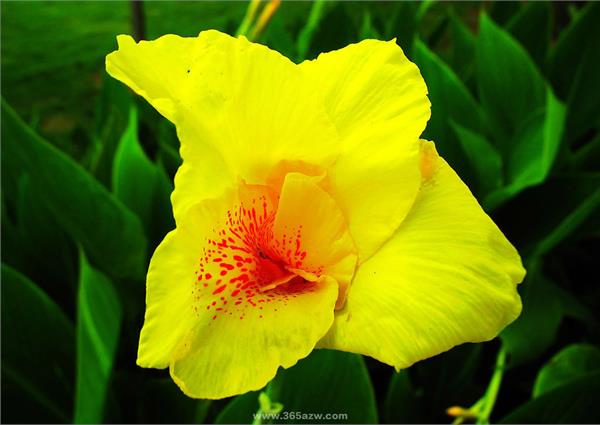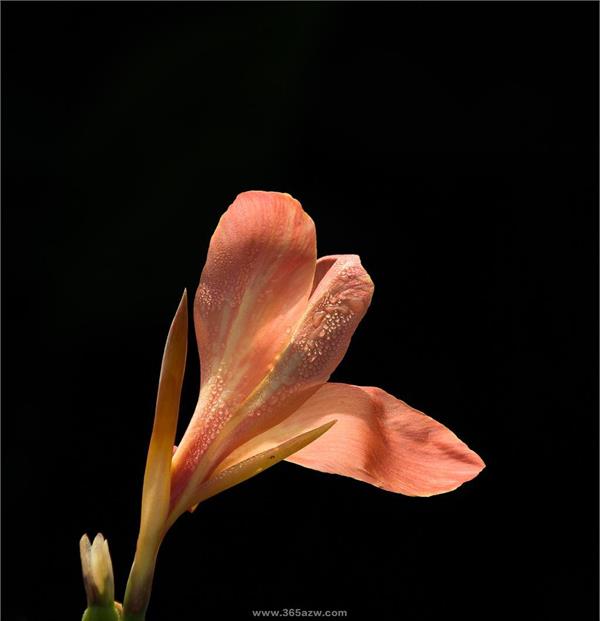Detailed explanation of culture methods and matters needing attention of canna
Canna, perennial root herb, is a tropical and subtropical commonly used flowering plants, let's take a look at the breeding methods and precautions of Canna.

Canna breeding methods and precautions detailed explanation
Canna farming methods (basic knowledge):
The best breeding time: the best breeding time of Canna plantain is the first and middle of April in spring.
Best growing soil: Canna is not very particular about soil, but it is best to have loose, well-drained soil and deep soil. Available rotten leaf soil, vegetable soil, chaff ash according to the ratio of 1: 1.5: 0.5, and add a small amount of bean cake, bone meal and other fertilizers mixed for good.

Growth humidity requirements: Canna like humid environment, but not too wet, too wet easy to rot roots.
The optimum growth temperature: The optimum growth temperature of Canna plantain is 16~30℃.
Best growing light: The growing season requires plenty of light, ensuring that at least 5 hours of direct sunlight is received every day. Too much darkness and insufficient light will delay flowering.
Cautions for breeding canna:
Fertilizer application: In addition to applying sufficient base fertilizer before planting, thin pancake liquid fertilizer should be applied 3~4 times a month in peak season, and then fertilizer can be applied once a month.

Watering points: after planting rhizomes have not yet grown new roots before, to less watering. The soil in the basin should be moist. Too wet soil tends to rot roots. Scape should be often watered after growth, keep the pot soil moist, if water shortage, after flowering easy to appear "leaf clip flower" phenomenon. In winter, watering should be reduced, with the principle of "see dry and see wet".
Pruning essentials: after the flowers wither, the flower stems should be cut off in time to promote the germination of new buds, grow flowers, and continue to bloom.
Breeding points: Common breeding methods of Canna are sowing and tuber breeding.
1. Sowing and reproduction: In April to May, the hard seed coat of the seed is cut with sharp tools, soaked in warm water for one day and night, and then sown in the open field. After sowing, it sprouts 2 to 3 weeks, and when it grows 2 to 3 leaves, it is transplanted once. It can bloom in the same year or the next year.
2. Tuber propagation: From March to April in spring, take out tubers, remove rotten parts, select stems with 2 to 3 strong teeth and bury them in the pot soil, and it is best to expose the bud tip to the pot soil. The basin should be well watered.

Pest control: There are two main kinds of pests and diseases of canna, one is banana bud insect, which will endanger the leaves and make them lose their beauty. This requires us to pay more attention to the plants and spray pesticides in time when pests or leaf buds are found. The other is mosaic disease, which can make plant leaves, stems yellow, it is best to cut off the diseased plants in time to prevent aphids.
Canna farming experience:
Canna flowering control: If you want to "May Day" flowering, January will be stored with a small amount of fertilizer soil cover, the environmental temperature requirements of 30℃ during the day, about 15℃ at night, after 10 days can sprout. After budding, plant the rhizomes with 2 to 3 buds into the pot, keep the pot soil moist, and apply fertilizer appropriately. The flower buds appear in early April, pay attention to ventilation, and "May 1" can bloom... If the flower scape does not sprout 20~30 days before the scheduled flowering date, spray 0.2% potassium dihydrogen phosphate aqueous solution once to urge flowers.
Related
- Wuhan Hospital Iron Tree Blooming Result Was Instantly Frightened by the Gardener Master
- Which variety of camellia is the most fragrant and best? Which one do you like best?
- What is the small blue coat, the breeding methods and matters needing attention of the succulent plant
- Dormancy time and maintenance management of succulent plants during dormancy
- Minas succulent how to raise, Minas succulent plant pictures
- What are the varieties of winter succulent plants
- How to raise succulent plants in twelve rolls? let's take a look at some experience of breeding twelve rolls.
- Attention should be paid to water control for succulent plants during dormant period (winter and summer)
- Watering experience of twelve rolls of succulent plants
- Techniques for fertilizing succulent plants. An article will let you know how to fertilize succulent plants.



